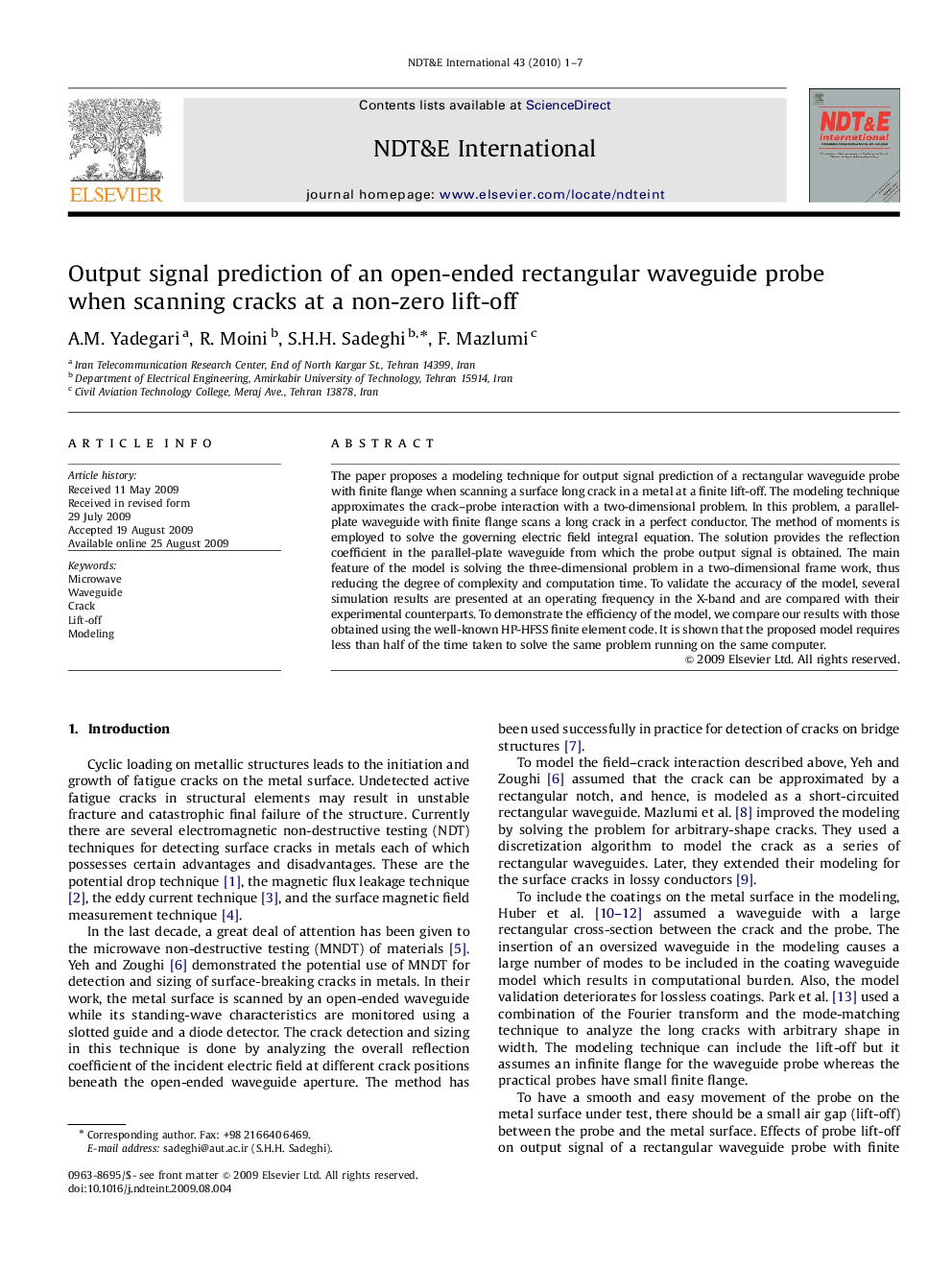| Article ID | Journal | Published Year | Pages | File Type |
|---|---|---|---|---|
| 295387 | NDT & E International | 2010 | 7 Pages |
The paper proposes a modeling technique for output signal prediction of a rectangular waveguide probe with finite flange when scanning a surface long crack in a metal at a finite lift-off. The modeling technique approximates the crack–probe interaction with a two-dimensional problem. In this problem, a parallel-plate waveguide with finite flange scans a long crack in a perfect conductor. The method of moments is employed to solve the governing electric field integral equation. The solution provides the reflection coefficient in the parallel-plate waveguide from which the probe output signal is obtained. The main feature of the model is solving the three-dimensional problem in a two-dimensional frame work, thus reducing the degree of complexity and computation time. To validate the accuracy of the model, several simulation results are presented at an operating frequency in the X-band and are compared with their experimental counterparts. To demonstrate the efficiency of the model, we compare our results with those obtained using the well-known HP-HFSS finite element code. It is shown that the proposed model requires less than half of the time taken to solve the same problem running on the same computer.
